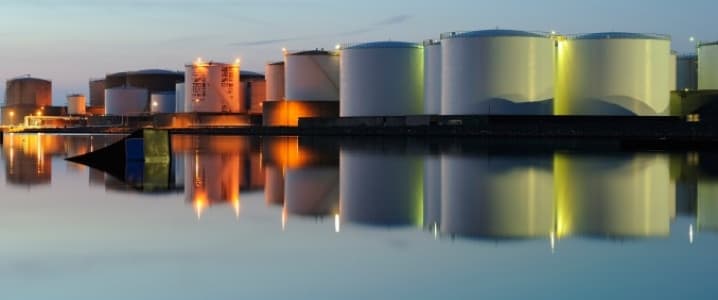OPEC met over the weekend to monitor the collective production cuts and assess the status of the oil market, and the meeting was shrouded in rumor about the potential cracks in the resolve of the group to keep the cuts in place through the rest of this year.
Heading into the meeting, a growing number of investment banks had predicted that the deal would come to an end earlier than expected, perhaps by mid-year. These predictions forced top OPEC officials to issue public statements that the deal would remain intact.
But over the weekend, Saudi Arabia’s oil minister went further, hoping to stamp out any notion of OPEC cohesion falling apart. Khalid al-Falih not only spoke about the longevity of the current production cuts, but he looked to a more permanent arrangement. “We should not limit our efforts to 2018. We need to be talking about a longer framework for our cooperation,” al-Falih told reporters ahead the meeting in Oman. He said that OPEC’s message to the oil market is that “this is something that is here to stay.”
Al-Falih could struggle to hold together the disparate members of the group over the long-term, especially if the oil market continues to tighten. Higher oil prices could tempt members to cheat on their commitments, and the “explosive” growth of U.S. shale also highlights the dangers of allowing oil prices to rise too high. Related: Crisis-Hit Venezuela Takes Over OPEC's Rotating Presidency
But al-Falih pointed out that despite the sudden increase in prices to multi-year highs, the OPEC agreement has still not sparked a resurgence in upstream investment for long-term projects. In fact, total capital and exploration expenditures worldwide is expected to bottom out this year at $510 billion, according to Rystad Energy, down sharply from the high watermark hit in 2014 at $900 billion. The late-2016 OPEC deal has helped stop the slide, but exploration spending is still a shadow of its former self.
Al-Falih wants an ongoing cooperative framework for OPEC (plus the group of non-OPEC countries led by Russia participating in the deal) that will persist beyond 2018, an arrangement that would inspire some confidence in investors about the “long-term prospects of the market.”
Moreover, al-Falih sought to downplay the recent bull run in the oil market, arguing that there’s a lot of work left to do to bring inventories back down to five-year average levels. “We are entering a low demand period seasonally, and we have to let that pass and see how inventories look in the second half before we consider any alteration” to the current production cuts, he said. He also predicted that the oil market might not reach a balance until early 2019, which, as the WSJ points out, is the first time that he specifically pushed that date beyond the end of 2018. Related: Oil Inches Higher On Saudi, Russian Rhetoric
What would a longer-term cooperative deal look like? Al-Falih said that it “doesn’t necessarily mean sticking barrel by barrel to the same limits or caps or targets of production country by country that we signed up to in 2016.” Perhaps it would be something more flexible, a deal that could include some tinkering depending on market conditions. The Saudi oil minister did not disclose any details, but said that the group is interested in working on something. “There is a readiness to continue cooperation beyond 2018... The mechanism hasn’t been determined yet, but there is a consensus to continue,” he said.
The key to such a development would be the buy-in from Moscow. Fortunately, for OPEC, Russia’s energy minister appeared open to the prospect. "Coordination in the oil market - the last year showed that this experience is successful. I think, if necessary, it can be used in the future. Everything will depend on the appropriateness and necessity,” Russian Minister of Energy Alexander Novak reportedly said on Sunday, according to Russian news outlet Vedomosti.
The view from OPEC differs very sharply from some top investment banks, which view the recent surge in oil prices as evidence that the market is starting to overheat. The expected wave of shale production is interpreted in different ways, depending on who you ask. Some see huge production gains from the U.S. as a sign that the OPEC cuts need time to work, and that they should remain in place. Others argue strong shale growth could tear apart OPEC’s resolve, especially if inventories decline faster than expected.
Based on the comments from the Saudi and Russian ministers from this past weekend’s OPEC meeting, however, the production cuts are not going anywhere anytime soon.
By Nick Cunningham of Oilprice.com
- The No.1 Challenge To The Oil Rally
- Shell Buys Into Blockchain Company
- Nord Stream 2 Is A Game Changer For Gazprom



















Saudi Arabia and Russia will continue with the OPEC/non-OPEC production cur agreement beyond 2018 but they may decide to reduce the size of the production cuts to reflect the new realities in the market in terms of rising oil prices and re-balancing in the market.
Having established a foothold inside OPEC, Russia is keen to continue current cooperation with Saudi Arabia for geopolitical reasons and also for the future stability of oil prices and the global oil market.
And contrary to what they say in public, members of OPEC want an oil price of $100 or even higher to balance their budgets. While Russia's economy can now live with an oil price of $40 or even less, they would not mind earning a bit more revenue for another rainy day.
Dr Mamdouh G Salameh
International Oil Economist
Visiting Professor of Energy Economics at ESCP Europe Business School, London